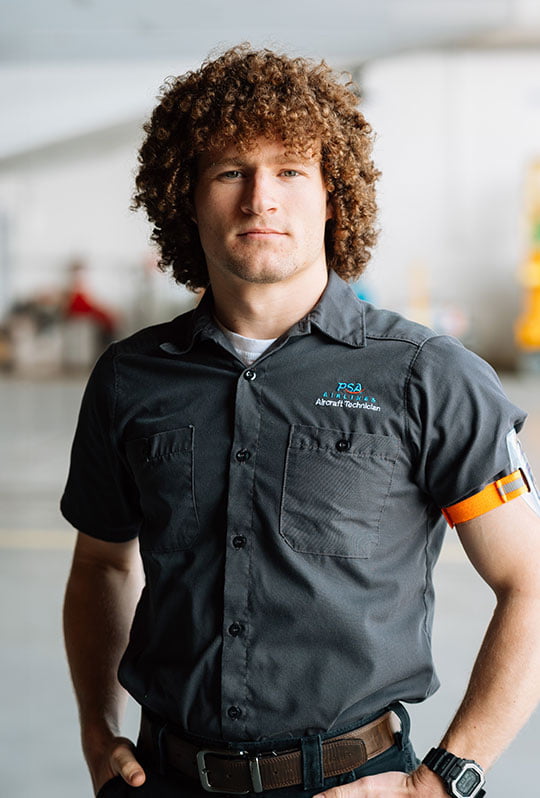Stay Current PSA Newsroom

January 10, 2023
Black History Spotlight: Flight Attendant, Machell Still-Pettis
In honor of Black History Month, we are spotlighting team members and their stories. Meet Machell Still-Pettis, a PHL-based Flight Attendant who is a direct descendent of the Still family, who fought tirelessly to help hundreds of slaves escape to freedom. Machell shares the perseverance and ambition of her family and their role in Black American History. We are honored to share her family’s story.
My name is Machell Still-Pettis and this is what Black History Month means to me.
I come from the renowned Still family that helped support the cause for freedom in American History. I am the second great-grand niece of Peter, Levin, William and Dr. James Still. They were born in Shamong Township, New Jersey to Sidney (later renamed Charity) and Levin Still, both former slaves. William was the youngest of 18 children. His parents had migrated separately to New Jersey. First, his father bought his freedom from his master in Caroline County, Maryland on the Eastern and moved north to New Jersey in 1798.
Charity escaped twice from Maryland. The first time, she and her four children were recaptured and returned to slavery. A few months later, Charity escaped again, taking only her two young daughters with her and reached her husband in New Jersey. Charity and Levin went on to have 14 more children, of whom William was the youngest. Though these children were born in the free state of New Jersey, under Maryland and federal slave law, they were still legally slaves, because their mother was an escaped slave. According to New Jersey law, however, they were free.
Neither Charity nor Levin could free their two older boys, who remained enslaved in Maryland. Levin Jr. and Peter were sold from Maryland to slave owners in Lexington, KY. Later they were resold to planters in Alabama in the Deep South. Levin Jr. died from a whipping while enslaved. Peter, his wife “Vina,” and most of their family escaped from slavery when he was about 50 years old with the help of two brothers named Friedman, who operated mercantile establishments in Florence, Alabama, and Cincinnati, Ohio. They were the subject of a book published in 1856 by Kate E. R. Pickard, “The Kidnapped and the Ransomed: Recollections of Peter Still and his Wife ‘Vina,’ After Forty Years of Slavery.”
William, often called “The Father of the Underground Railroad,” helped as many as 800 slaves escape to freedom. He interviewed each person and kept careful records, including a brief biography and the destination, along with any alias adopted. These records became the book William wrote titled, “The Underground Railroad Records.” He kept his records carefully hidden. He knew the accounts would be critical in aiding the future reunion of family members who became separated under slavery. He experienced this personally when he aided his own brother, Peter, whom he had never met before.
Peter sought help at the Pennsylvania Anti-Slavery Society, hoping to find his parents or other members of his birth family. He met William there, but initially had no idea they were related. As William listened to Peter’s story, he recognized the history his mother had told him many times. After learning that his older brother Levin was whipped to death for visiting his wife without permission, William shouted, “What if I told you I was your brother?” Later, Peter and his mother were reunited after having been separated for 42 years.
William worked with other Underground Railroad agents operating in the South, including in Virginia ports, nearby Delaware and Maryland, and in many counties in southern Pennsylvania. His network to freedom also included agents in New Jersey, New York, New England and Canada. Conductor Tubman traveled through his office with fellow passengers on several occasions during the 1850s. William also forged a connection with the family of John Brown and sheltered several of Brown’s associates fleeing the 1859 raid on Harpers Ferry.
Another of William’s brothers, James, wanted to become a doctor, but said he “was not the right color to enter where such knowledge was dispensed.” James studied herbs and plants and apprenticed himself to a white doctor to learn medicine. He was self-taught and became known as the “Black Doctor of the Pines,” because he lived and practiced in the Pine Barrens. Dr. James Still wrote a book called “Early Recollections and Life of Dr. James Still.” His son, Dr. James Thomas Still, completed his father’s dream, graduating from Harvard Medical School in 1871 as the third African American to receive a degree in medicine.
My family history was taught to me at early age. It is very important to know where you come from so you know where you are going. I try to help others as I was taught and be kind as I would want to be treated. Many of my family’s descendants went on to become famous athletes, musicians, doctors, authors, officers, military servicemen and women and more to continue the Still Family legacy. I’m honored to be a part of this legacy and am committed to making the world a better place by teaching others how important it is to know that diversity, respect and being you is OK. We all must help each other and stand up for what is right and doing the right thing.
I am the former Director of the Dr. James Still Educational and Historical Site in Medford, New Jersey. It was the first African American state-owned historical site in New Jersey.
History allows us to reflect on what we can do to make changes for the better in our society and workplace. In aviation, we have come a long way from being a stewardess to a flight attendant. What will be next? We are the future and I am excited to see the possibilities of what we can do together.

















